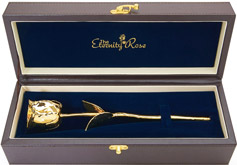Active Listening: The Key to Meaningful Relationships
Communication is the backbone of human interaction, and at the core of effective communication lies the often-overlooked skill of active listening. It goes beyond the mere act of hearing words; it involves a deliberate effort to understand the deeper meaning, emotions, and intentions behind the spoken language. In a world buzzing with constant chatter, the art of active listening is a powerful tool that can transform relationships, both personally and professionally.
Understanding Active Listening
Active listening is not just a skill; it's a mindset—a conscious choice to engage fully with the speaker and comprehend the entirety of their message. It transcends passive hearing, requiring the listener to be present, attentive, and empathetic. The essence of active listening lies in making the speaker feel heard, acknowledged, and valued.
The Importance of Active Listening
In a society characterised by fast-paced communication and digital distractions, the significance of active listening cannot be overstated. It serves as a foundation for building trust, fostering meaningful relationships and connections, and resolving conflicts. Active listening is not only about processing words but also about grasping the emotions, nuances, and unspoken cues that accompany them. It lays the groundwork for constructive dialogue and promotes a culture of open communication.
10 Active Listening Techniques
To cultivate the art of active listening, one can employ a variety of techniques. Here are ten effective strategies to enhance your active listening skills:
1. Be Fully Present
The foundation of active listening is being fully present in the moment. Clear your mind of distractions, put away electronic devices, and focus on the speaker. By immersing yourself in the conversation, you signal to the speaker that their words have your undivided attention, creating an atmosphere conducive to open communication.
2. Maintain Good Eye Contact
Eye contact is a powerful non-verbal cue that conveys attentiveness and interest. Maintain good eye contact with the speaker, but be mindful not to make them uncomfortable. The 50/70 rule suggests that holding eye contact for 50% to 70% of the conversation time strikes a balance between engagement and respect for personal space.
3. Provide Affirmative Non-Verbal Cues
Active listening involves not only listening to words but also interpreting non-verbal cues. Nodding, smiling, and using affirmative gestures demonstrate your engagement and encouragement. These cues reassure the speaker, creating a positive environment for expression.
4. Ask Open-Ended Questions
Encourage a deeper exchange of ideas by asking open-ended questions. Unlike closed-ended questions that elicit brief responses, open-ended questions invite the speaker to share their thoughts, feelings, and experiences. Examples include, "Can you elaborate on that?" or "How did that make you feel?" These questions prompt thoughtful reflection and contribute to a more meaningful conversation.
5. Paraphrase and Summarise
After the speaker has shared their thoughts, paraphrase or summarise what you've heard. This not only confirms your understanding but also reassures the speaker that their message has been received accurately. Paraphrasing fosters clarity and minimises the risk of miscommunication.
6. Express Empathy
Empathy is a cornerstone of active listening. Put yourself in the speaker's shoes, acknowledging and validating their emotions. Express empathy through statements like, "I can imagine that must be challenging for you" or "I understand how that could be frustrating." Demonstrating empathy builds trust and strengthens the connection between the listener and the speaker.
7. Be Patient and Avoid Interrupting
Patience is a virtue in active listening. Allow the speaker to express themselves without interruption. Resist the urge to formulate responses while they are speaking, and refrain from cutting them off. Patience creates a space for a more profound exchange of ideas and feelings.
8. Acknowledge Cultural Differences
Recognise and respect cultural differences in communication styles. Different cultures may have varying norms regarding eye contact, gestures, and the use of silence. Being aware of and respecting these differences enhances your ability to connect with individuals from diverse backgrounds.
9. Listen to Understand, Not Just to Respond
Active listening is not a precursor to formulating your response; it's about genuinely understanding the speaker's perspective. Focus on comprehending the entirety of their message before crafting your reply. This approach fosters a more authentic and meaningful exchange of ideas.
10. Withhold Judgement
Maintain a non-judgmental stance throughout the conversation. Suspend preconceived notions, avoid making assumptions, and refrain from passing judgment on the speaker's thoughts or experiences. A judgment-free environment encourages open communication and allows the speaker to express themselves freely.
Conclusion
Active listening is a dynamic skill that requires intention, practice, and a genuine desire to connect with others. By incorporating these ten active listening techniques into your daily interactions, you can elevate your communication skills and build stronger, more meaningful relationships. Whether in personal or professional settings, the ability to actively listen transcends words—it fosters understanding, empathy, and a sense of shared humanity. Make active listening a priority, and witness the transformative impact it can have on your connections with those around you.



















